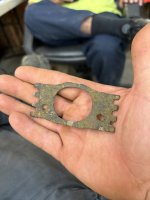Have you guys noticed you get more hits on a specific bottom condition ? I use a sandshark, and I seem to get most of my hits in an area with gravel. I'm guessing it's because whatever falls on it doesn't sink ?
Upvote
0


 ....no, but I have waded through my share of it.
....no, but I have waded through my share of it.

